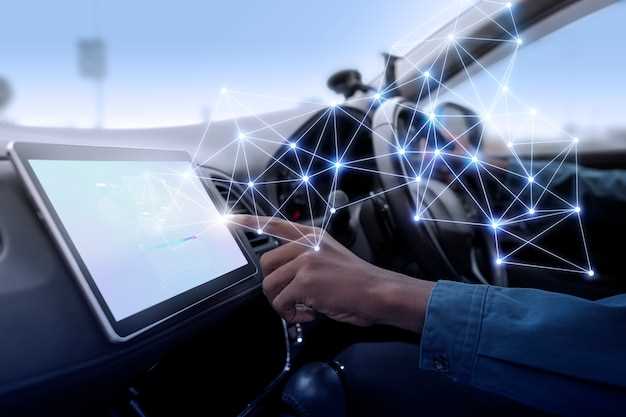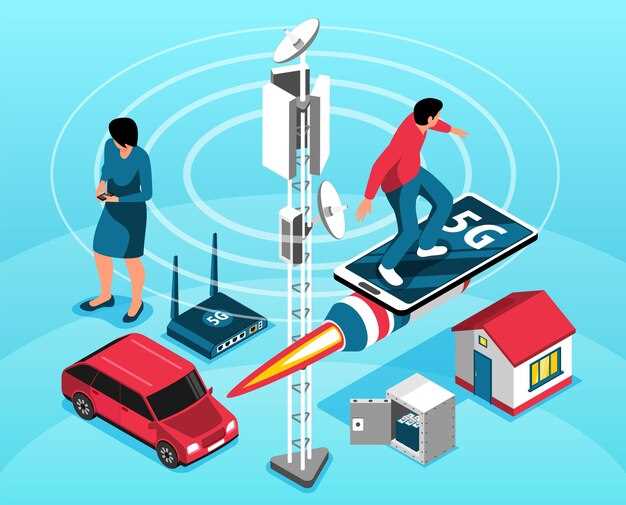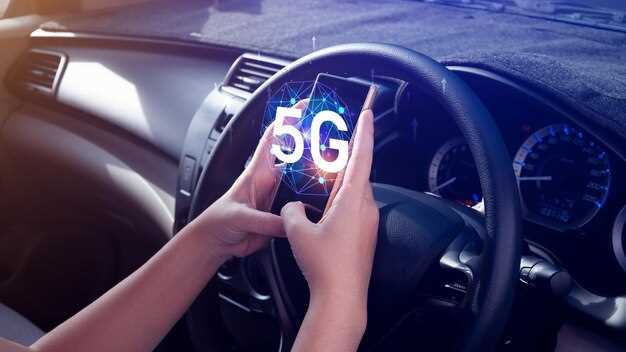
The advent of 5G technology is ushering in a new era for the automotive industry, revolutionizing how vehicles communicate with each other and their environment. With significantly increased bandwidth and reduced latency, 5G connectivity allows for seamless data transfer, which is crucial in enhancing various automotive systems. This technological leap is not just an upgrade; it fundamentally changes the way cars operate, providing a foundation for smarter, safer, and more efficient vehicles.
One of the most significant benefits of 5G is its ability to facilitate real-time communication. Vehicles equipped with 5G technology can instantly share information about traffic conditions, weather updates, and road hazards, enabling drivers to make informed decisions on the fly. This real-time data exchange can significantly reduce the likelihood of accidents and improve overall road safety, making travel not just faster but also far more secure.
Moreover, 5G enables advanced automotive features like autonomous driving and vehicle-to-everything (V2X) communication. With the support of 5G, cars can better interpret their surroundings, analyze vast amounts of data, and respond to changing conditions, all in real-time. As a result, the future of transportation looks not only promising but also increasingly interconnected, ultimately paving the way for a new standard in automotive innovation.
Real-Time Data Processing for Enhanced Safety Features

Real-time data processing is a game-changer in the automotive industry, particularly when it comes to enhancing safety features in modern vehicles. With the advent of 5G connectivity, cars can now process vast amounts of data instantaneously, enabling quicker decision-making that directly contributes to passenger safety.
This technology allows vehicles to communicate not only with each other but also with surrounding infrastructure, such as traffic lights and road signs. Through the exchange of real-time data, cars can anticipate potential hazards and react more swiftly than ever before. For instance, if a vehicle detects sudden braking from a car ahead, it can instantly analyze the situation and activate its emergency braking system to prevent a collision.
Moreover, real-time data processing enhances advanced driver-assistance systems (ADAS) by providing immediate feedback about road conditions and potential dangers. By leveraging data from various sensors, including cameras and LiDAR, cars can identify obstacles, lane changes, and pedestrian movements, significantly reducing the risk of accidents.
The integration of real-time data into vehicle systems also supports predictive analytics, which can assess drivers’ behaviors and adjust safety features accordingly. For example, if a car detects erratic driving patterns indicative of distraction or fatigue, it can issue alerts or even take corrective actions to ensure safer driving.
Incorporating real-time data processing enabled by 5G is not just about enhancing existing safety features; it is about redefining automobile safety standards. With continuous improvements in data transmission speeds and reliability, cars equipped with such technologies are poised to significantly reduce accident rates and foster a safer driving environment for everyone on the road.
Seamless Vehicle-to-Everything (V2X) Communication
The advent of 5G technology represents a significant leap forward in automotive connectivity, particularly in the realm of Vehicle-to-Everything (V2X) communication. This innovative approach enhances how cars interact with their surrounding environment, making roads safer and driving experiences more efficient.
V2X communication encompasses several critical interactions, including:
- Vehicle-to-Vehicle (V2V): Cars share information about speed, direction, and road conditions in real-time, reducing the risk of collisions.
- Vehicle-to-Infrastructure (V2I): Vehicles communicate with traffic lights, road signs, and infrastructure to optimize traffic flow and reduce congestion.
- Vehicle-to-Network (V2N): Cars stay connected to cellular networks to access cloud-based services, enhancing navigation and entertainment options.
- Vehicle-to-Pedestrian (V2P): Communication with mobile devices of pedestrians enhances safety by alerting drivers to nearby foot traffic.
The implementation of 5G in V2X communication enables:
- Low Latency: 5G’s ultra-low latency allows cars to receive and transmit data in real-time, crucial for timely decision-making in dynamic environments.
- High Bandwidth: Increased data capacity supports a vast number of connected devices, ensuring that every vehicle can seamlessly access critical information without delays.
- Enhanced Reliability: 5G networks provide more stable connections, reducing the likelihood of data loss during transmission, essential for safety-critical applications.
Real-time data exchange through V2X communication can transform driving. For example, if a car detects an impending collision, it can immediately alert other nearby vehicles and infrastructure, allowing for timely evasive actions. Similarly, traffic signals can adjust their timing based on real-time traffic conditions reported by vehicles, alleviating congestion.
In conclusion, the integration of 5G technology into V2X communication is a game changer for the automotive sector. It establishes a more connected ecosystem where cars can interact not only with each other but also with their environment, resulting in safer and smarter mobility solutions.
Impacts of 5G on Autonomous Driving Capabilities

The introduction of 5G technology is set to revolutionize autonomous driving capabilities by enhancing communication and data processing speeds. With its ultra-low latency, 5G enables cars to transmit and receive information in real-time, which is crucial for the effective operation of autonomous systems. This means that vehicles can react to their surroundings almost instantaneously, improving safety and efficiency.
Real-time data exchange facilitated by 5G allows autonomous vehicles to communicate with each other and with infrastructure, such as traffic lights and road sensors. This connectivity helps in making better decisions based on the traffic environment, thereby reducing the risk of accidents and optimizing route navigation. Furthermore, 5G enhances the ability to gather and analyze extensive amounts of data from a variety of sources, enabling vehicles to learn continuously and adapt to changing conditions.
Additionally, 5G supports the integration of advanced features such as remote vehicle monitoring and control. This allows for immediate updates to software and systems, ensuring that autonomous cars operate with the latest safety protocols and information. Enhanced connectivity also facilitates vehicle-to-everything (V2X) communication, where cars can interact seamlessly with pedestrians, cyclists, and other road users, fostering a more interactive and safer transportation ecosystem.
In conclusion, 5G connectivity significantly enhances the performance and reliability of autonomous driving capabilities. By providing vehicles with real-time data and enabling constant communication, 5G technology paves the way for safer, smarter, and more efficient driving experiences in the future.




